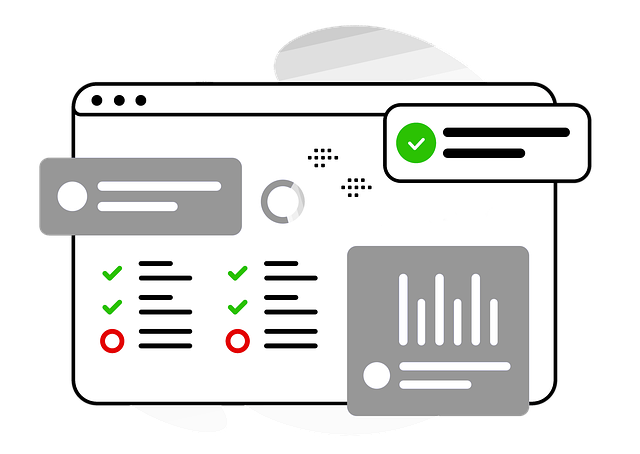The Lean Efficiency Framework, rooted in lean manufacturing principles, uses 5S training (Sort, Set in Order, Shine, Standardize, Sustain) to minimize waste and maximize value. This disciplined system creates orderly workspaces, enhances process standardization, and drives productivity and efficiency through continuous improvement. By implementing 5S practices, organizations foster a culture of ongoing learning, reduce errors, and stay competitive in today's business landscape. Regular reviews, metrics tracking, and leadership support are crucial for sustaining these lean management techniques beyond initial implementation.
“Discover the power of lean efficiency with our comprehensive guide. Explore the foundational concepts behind the Lean Efficiency Framework and its transformative impact on workplace productivity. We delve into the core principles of 5S training—a powerful tool for organization—and its role in streamlining processes. Learn effective lean management techniques to optimize workflow. Understand the significance of continuous improvement through process standardization, with a special focus on 5S methodologies. Equip yourself with tips for long-term success in implementing and sustaining lean practices.”
- Understanding Lean Efficiency Framework: A Comprehensive Overview
- The Core Principles of 5S Training and Its Role in Workplace Organization
- Lean Management Techniques for Optimizing Processes
- Continuous Improvement Through Standardization: A Deep Dive into 5S
- Implementing and Sustaining Lean Practices: Tips for Long-Term Success
Understanding Lean Efficiency Framework: A Comprehensive Overview

The Lean Efficiency Framework is a powerful approach to enhancing productivity and workplace organization. At its core, it revolves around the concept of eliminating waste and maximizing value in various processes within an organization. This framework draws heavily from lean management principles, which originated in manufacturing but have since been successfully applied across industries. One key component driving this method is 5S training – a structured system that promotes discipline and order through sorting, setting in place, shining (cleaning), standardizing, and sustaining.
By implementing 5S continuous improvement practices, organizations can achieve a highly organized and efficient workplace. Process standardization plays a pivotal role here, ensuring that tasks are executed consistently and effectively. This approach not only improves productivity but also fosters a culture of quality and continuous learning within the organization.
The Core Principles of 5S Training and Its Role in Workplace Organization

The core principles of 5S training are fundamental to lean management and play a pivotal role in enhancing workplace organization. This powerful methodology, derived from Japanese production systems, focuses on creating an organized, efficient, and safe work environment. The ‘5S’ acronym stands for Sort (removing unnecessary items), Set in Order (arranging tools and equipment logically), Shine (maintaining cleanliness), Standardize (establishing consistent practices), and Sustain (continuing the process). By implementing these steps, organizations can achieve remarkable improvements in productivity and efficiency.
5S training encourages employees to take ownership of their workspace, ensuring that each item has a designated place and purpose. This process standardization not only streamlines daily operations but also fosters a culture of continuous improvement. As workers become more engaged in maintaining an organized environment, they can identify and eliminate waste, leading to smoother processes and better quality outcomes. The ultimate goal is to create a workplace where every step is optimized, contributing to overall lean management practices.
Lean Management Techniques for Optimizing Processes

Lean Management Techniques for Optimizing Processes involve a series of powerful tools that transform workplaces and drive efficiency. One of the foundational practices is 5S training, which focuses on sorting, setting in order, shining (cleaning), standardizing, and sustaining. This methodical approach to workplace organization ensures every element has a designated place, promoting an environment free from clutter and waste. By implementing 5S, businesses can enhance productivity and streamline operations significantly.
Additionally, lean management emphasizes process standardization as a key strategy for continuous improvement. It involves breaking down complex tasks into simpler steps, identifying and eliminating non-value-added activities, and establishing clear standards for each stage of production or service delivery. This standardization facilitates easier training, reduces errors, and enables teams to work more collaboratively, ultimately leading to increased efficiency and improved quality.
Continuous Improvement Through Standardization: A Deep Dive into 5S

In the realm of lean management, continuous improvement is a cornerstone principle, and at its heart lies process standardization through 5S training. This powerful methodology, rooted in Japanese lean manufacturing, transforms workplaces by fostering an environment where efficiency and productivity thrive. By teaching employees to Sort, Set in Order, Shine (clean), Standardize, and Sustain, 5S continuous improvement becomes a way of life. It’s not just about organizing physical spaces; it’s about streamlining processes, eliminating waste, and empowering teams to identify and implement enhancements that drive overall business value.
Workplace organization achieved through 5S goes beyond initial setup. It encourages a culture where every employee understands their role in maintaining an orderly, standardized workspace, reflecting the spirit of lean management. This approach ensures that processes are consistently executed, minimizing errors and maximizing output. Through regular 5S training, organizations can continuously refine their operations, remaining agile and competitive in today’s fast-paced business landscape.
Implementing and Sustaining Lean Practices: Tips for Long-Term Success

Implementing and sustaining Lean practices requires a strategic approach that goes beyond initial implementation. After introducing 5S training to establish a solid foundation of workplace organization, it’s crucial to foster a culture of continuous improvement. Lean management principles should be integrated into daily operations, ensuring every employee understands their role in process standardization and efficiency. Regular reviews and metrics tracking are essential tools for identifying areas for enhancement.
Encourage teams to embrace the 5S methodology as a living, breathing part of their workflow, constantly seeking ways to improve upon it. Consistent communication and leadership support are vital to keeping the momentum going. By combining comprehensive training with ongoing engagement, organizations can achieve long-term success in maintaining a lean, efficient workplace that adapts to changing needs.
